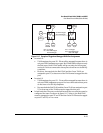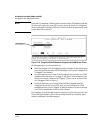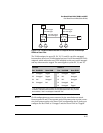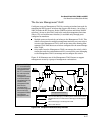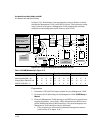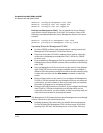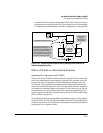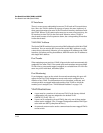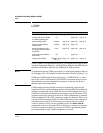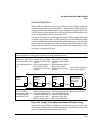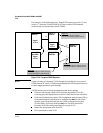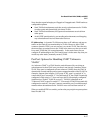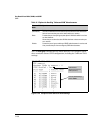
Port-Based Virtual LANs (VLANs) and GVRP
Port-Based Virtual LANs (Static VLANs)
include the link carrying the Management VLAN, which will cause loss of
management access to some devices. This can also occur where meshing
is configured and the Management VLAN is configured on a separate link.
VLAN 20 (Management VLAN)
VLAN 10
VLAN 30
VLAN 40
Mesh Domain
Includes
Membership in
Three VLANs
Switch
1
Switch
2
Switch
3
Even though the ports on the
Management VLAN link do not
belong to any of the VLANs in the
mesh, the link will be blocked if
you enable Spanning Tree. This is
because Spanning Tree operates
per-switch and not per-VLAN.
Figure 11-23. Example of Inadvertently Blocking a Management VLAN Link by
Implementing Spanning Tree
Effect of VLANs on Other Switch Features
Spanning Tree Operation with VLANs
Because the Series 5300XL switches follows the 802.1Q VLAN recommenda-
tion to use single-instance spanning tree, Spanning Tree operates across all
ports on the switch (regardless of VLAN assignments) instead of on a per-
VLAN basis. This means that if redundant physical links exist between the
switch and another 802.1Q device, all but one link will be blocked, regardless
of whether the redundant links are in separate VLANs. However, you can use
port trunking to prevent Spanning Tree from unnecessarily blocking ports
(and to improve overall network performance). Refer to “STP Operation with
802.1Q VLANs” on page
13-4.
Note that Spanning Tree operates differently in different devices. For example,
in the (obsolete, non-802.1Q) HP Switch 2000 and the HP Switch 800T, Span-
ning Tree operates on a per-VLAN basis, allowing redundant physical links as
long as they are in separate VLANs.
11-31



